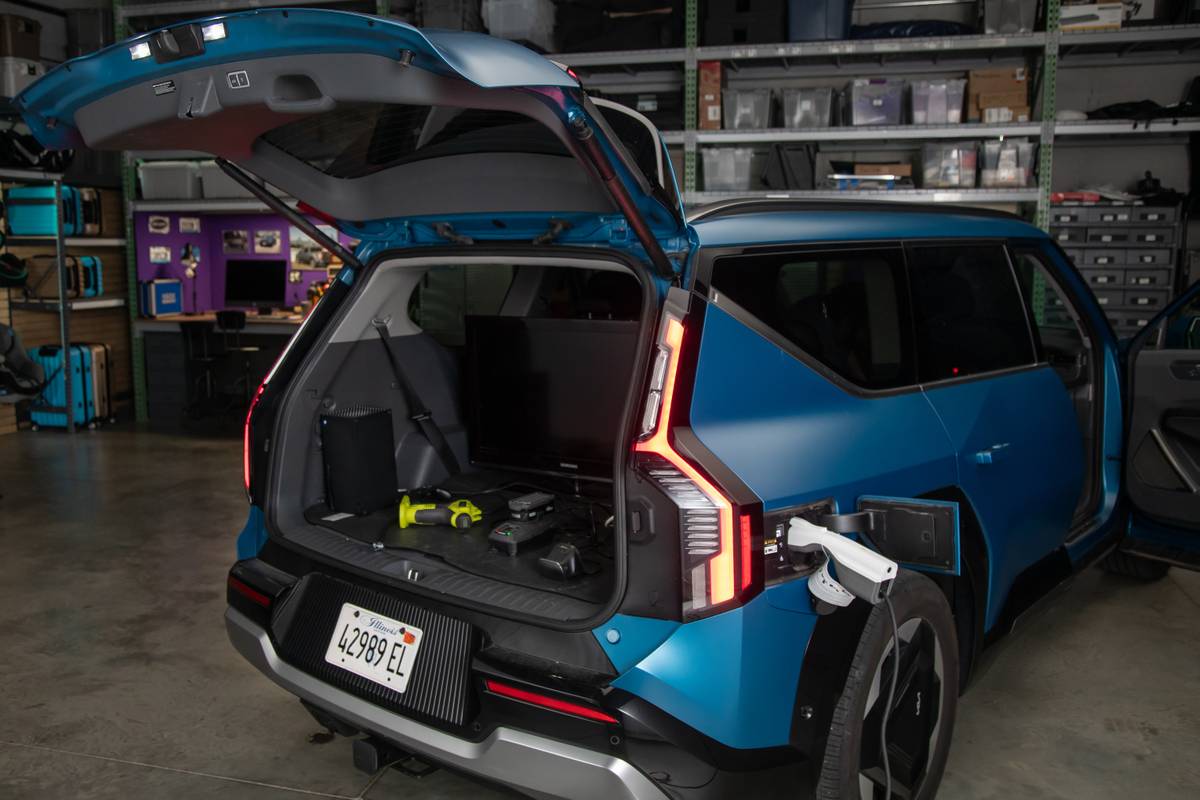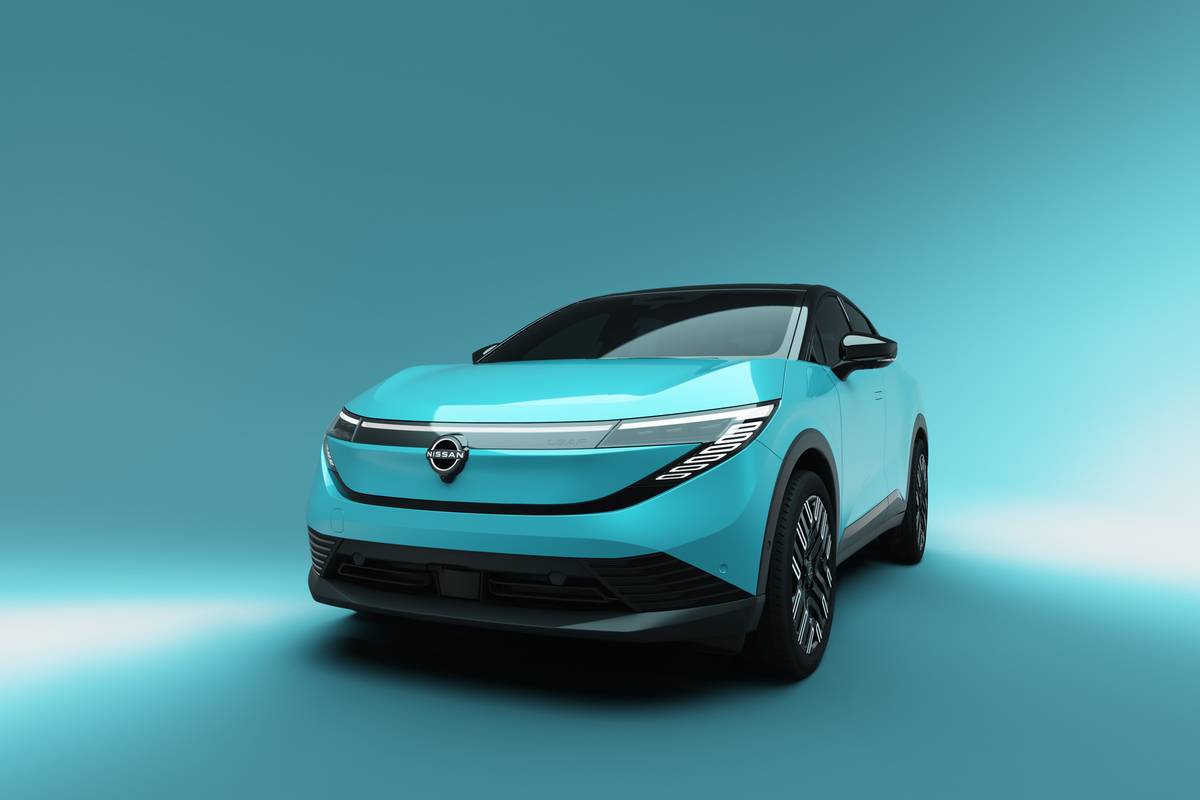washingtonpost.com's view
IT’S TRUE: Women are from Venus. Men are from Mars. Any question about that was settled recently in a male-female test drive of the new, upgraded 1996 Land Rover Discovery.
I did the male thing. Cindy Skrzycki, a Washington Post colleague, drove for the women.
We each used the new Land Rover Discovery for about a week. I had a few complaints, but mostly enjoyed it. Cindy had a lot of complaints, but enjoyed it somewhat.
We both agreed that the Discovery is a heck of an off-road vehicle. But we had irreconcilable differences over the efficacy of using the Discovery as an everyday ride, which is how most people who buy it use it.
I conceded that the Discovery would be a pricey commuter, both in terms of purchase and operating costs. But it’s such a neat machine, I figured that well-heeled commuters or passionate gearheads would be willing to swallow the costs, as many do.
But on the commuter issue, Cindy was unequivocal in her disdain for the Discovery. In that regard, the vehicle makes no sense, she said.
Background: Land Rover, now owned by Germany’s BMW AG, is selling every Discovery, Range Rover and Land Rover Defender 90 model it can ship to the United States. The company sold 20,026 vehicles in America last year, up 66.3 percent over its sales in 1994.
The Discovery has been leading that sales parade, largely because it is the most affordable of the Land Rovers at a base price of $29,950 — a 1995 sticker that remains the same for its improved 1996 version.
In the 1996 Discovery, you’re getting a slightly larger engine, a new 4-liter V-8 that replaces the 3.9-liter V-8 in the older model. The new engine is rated 182 horsepower at 4,750 rpm with max torque set at 233 pound-feet at 3,000 rpm, which means it has a tad more oomph than the previous model.
Though the power differences between the new and old engines aren’t much, the differences in smoothness are remarkable. The new engine doesn’t grumble nearly as much as its predecessor in moving to higher speeds, or in pulling loads.
The new engine is also more fuel-efficient, meaning that it gets about 14 miles per gallon in the city, about 8 percent better city mileage than the older model.
Other new stuff in the reworked Discovery includes eight-way power front seats, factory-installed fog lights and some interior fixes, such as the automatically dimming interior rearview mirrors.
Standard equipment includes full-time four-wheel-drive, a two-speed transfer case with manually locking center differential, a five-speed manual transmission, dual front air bags, four-wheel disc brakes and an all-terrain, four-wheel antilock braking system.
A four-speed automatic transmission is optional in the Discovery, which is sold in three trim levels: the base SD, upscale SE and the tested, full-boat luxury SE7.
Complaints: From two perspectives. Cindy’s complaints:
* The Discovery is an inadequate four-seater for young families, meaning that the rear seats ar e too small to properly accommodate the required car seats for infants and small children.
* There is inadequate cargo space for baby carriages and other cargo needed by young families on long trips.
* The arrangements of dials and controls “are peculiarly un-American.” For example, the power control buttons for the front seats literally are hidden on the sides of the center console, making them difficult to find and reach.
* Overall, the Discovery lacks the driving ease of, say, a Ford Explorer or Chevrolet Blazer.
My complaints:
I heartily agree that when it comes to the location and placement of control buttons and gauges, and the location of tire-change gear (put in several places instead of one central spot in the vehicle), the Discovery is an ergonomic disaster area.
I can’t say anything about the baby seats, because all of my babies are now adults.
Praise: From Cindy’s point of view: “If you’re going on an African safari or on a trip deep into the Australian outback, this is the vehicle for you.”
My kudos: I agree. The Discovery is one of the toughest off-road vehicles you can buy. It’s great in the mud. But most of its owners will use it only to go to work, pray, party and shop.
Head-turning quotient: Cindy: “It’s a tank.”
Me: With its humped roof and everything, it’s ugly in a distinctive, elegant sort of way. It’s, um, snob-ugly, the kind of ugly that inspires envy.
Ride, acceleration and handling: Cindy says that the Discovery is tanklike in all three categories on road. I think it gives competent on-road performance in all three areas. We both give the Discovery superior marks for off-road talent. Neither of us complained about the Discovery’s brakes.
Mileage: Here is where we both agree that the Discovery has commuter deficits. Improvements in fuel efficiency mean that the Discovery gets an overall 15 miles per gallon, combined city-highway. Taking it off-road cuts that mileage further. The vehicle is equipped with a 23.4-gallon fuel tank, which means you can expect a city-highway range of about 336 miles on the usable volume of regular unleaded.
Sound system: Eight-speaker AM/FM stereo radio and cassette with six-disc CD changer installed by Land Rover. I loved it, but forgot to tell Cindy that the disc changer was located under the driver’s seat — which she thought was almost as dumb as my dumb failure to tell her where to find the thing.
Price: The base price on the tested Discovery SE7 is $37,925. The dealer’s invoice is $33,474. Price as tested is $39,175, including $625 for the compact disc changer and a $625 destination charge, according to figures provided by Automobile Invoice Service.
Purse-strings note: Compare with Jeep Grand Cherokee, Ford Explorer with V-8, Oldsmobile Bravada, Toyota 4Runner, Isuzu Trooper, Mitsubishi Montero and Nissan Pathfinder.
Latest news



